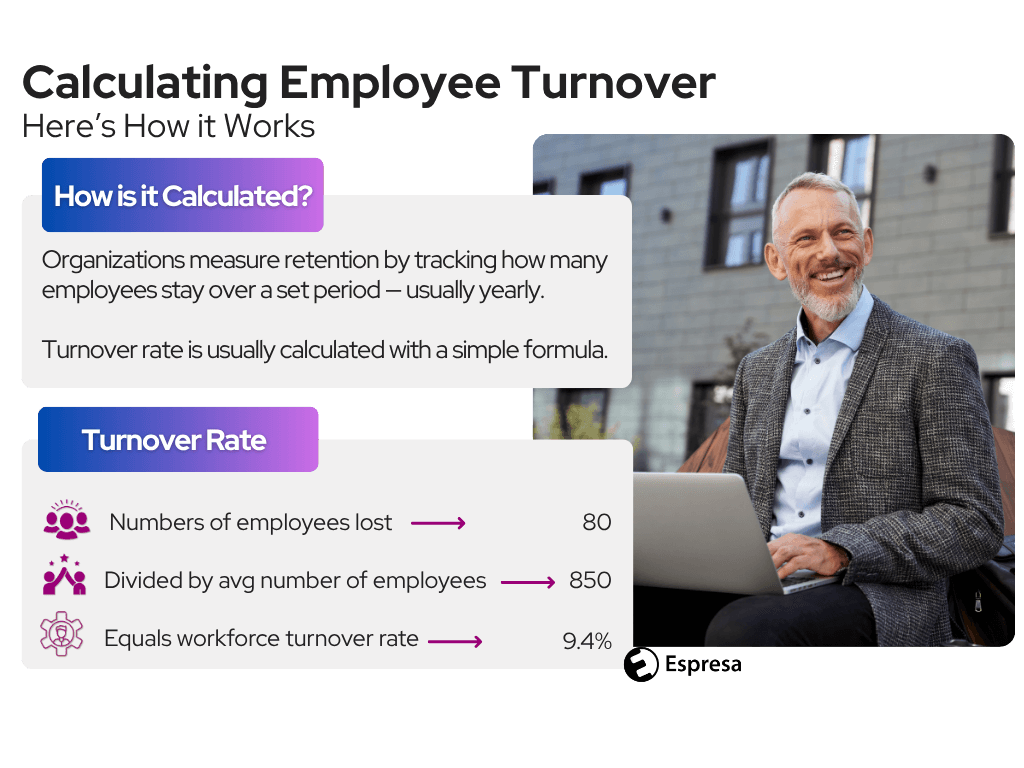Hiring a new employee is an exciting milestone for both the organization and the individual. Among all the high-performing candidates, one was the perfect fit, and everything aligned. But what does that process really involve? Employers invest dozens of hours into vetting, interviewing, onboarding, and training. When that investment walks out the door, the impact on long-term business success can be substantial.
Gallup estimates that replacing leaders and managers can cost around 200% of their annual salary, with technical professionals costing around 80% of their salary, and frontline employees about 40%. When a company has a higher-than-average turnover rate, they spend thousands of dollars on a preventable issue, cutting funds for other crucial endeavors. In this article, we’ll explore how organizations can reduce preventable employee turnover through thoughtful leadership and flexible, employee-led benefits.
Here’s what we’ll cover:
- Why employees leave, and how to reduce your turnover rate
- 4 employee retention strategies that foster sustainable growth
- How to address stress in the workplace
- Building a resilient workforce through compassionate leadership
Employees don’t leave companies. They leave cultures.
Why employees leave, and how to reduce your turnover rate
The first step in addressing turnover is understanding its root causes. Why are employees not feeling satisfied in their current roles? According to Pew Research, the evidence is clear. Employees commonly cite lower pay, limited advancement opportunities, low flexibility, and poor benefits as reasons for leaving. Each of these challenges presents an opportunity for employers to strengthen support, drive loyalty, and retain top talent.
In fact, Gallup research shows that up to 42% of turnover is preventable. When asked about what their manager or leaders could’ve done to make them stay, employees overwhelmingly responded with better pay and benefits. While pay and benefits remain a consistent factor, other non-monetary concerns were raised. Some cited poor day-to-day interactions with managers, organizational issues, few advancement opportunities, or issues with flexibility.
One thing is clear: employers hold the key to retention success. Employees don’t leave companies. They leave cultures.
Investing in employee retention isn’t just cost-saving. It’s a catalyst for long-term success.
How to calculate employee turnover rate
Understanding your turnover rate is powerful first step toward building a healthier workplace. It gives you a clear snapshot of organizational stability and highlights where improvements can make the biggest impact.
Use this proven formula to calculate your employee turnover rate and guide your retention strategy with data-driven insight.

4 employee retention strategies that foster sustainable growth
Investing in employee retention isn’t just cost-saving. It’s a catalyst for long-term success. When effective team members feel valued and choose to stay, the savings from reduced turnover can be reinvested into innovation, culture, and growth. So, what inspires long-term loyalty and engagement?
Research suggests that while pay and benefits contribute, engagement, supportive culture, and work-life balance play an even greater role. Gallup reports that four times more employees leave due to low engagement, toxic work culture, or poor work-life balance than for compensation a lone.
The good news? Employers can take proactive steps to build a workplace where people want to stay and thrive.
Better compensation and inclusive benefits
It may seem obvious, but many associate high pay with high satisfaction. That’s only one piece of the employee experience. Comprehensive, thoughtfully designed benefits can have a far greater impact at work and at home. The National Library of Medicine finds that great benefit design is among the key components of Total Worker Health (TWC), boosting longevity, engagement, and productivity.
A successful benefit structure is more than the sum of its parts. With flexible options like Lifestyle Spending Accounts (LSA), employees can choose what matters to them, instead of being siloed into traditional benefits that may not fit their needs. Additional benefits like incentivized wellness challenges can also form a more comprehensive structure, especially when paired with an LSA.
Instead of standalone or segmented benefits, integrate wellbeing initiatives that evolve with employee needs.
Flexible scheduling
Burnout is among the leading causes of low performance and disengagement. When employees feel unsupported or overwhelmed, absenteeism rises, productivity drops, and turnover risk grows.
A more flexible schedule enables employees, especially working parents, to thoughtfully divide their time between personal and professional needs. The Harris Poll with Kindercare in 2024 found that 61% of working parents want flexible start and end times, and 49% want employer-subsidized childcare.
When employers understand their workforce and adapt their company culture to fit them, engagement soars.
Explore how Espresa supports families with inclusive, flexible benefits in the Espresa Family-Forming Guide
Supporting professional & personal development
Lack of professional development is consistently cited as a top reason employees leave their jobs. By investing in development opportunities, employers not only build skills, they build loyalty.
Discover Professional Development Resources from Espresa
Recognition for the little wins
Employee recognition is a major driver of retention. It boosts engagement, encourages productivity, and helps people feel seen and valued. Even simple, non-monetary acknowledgements can make a meaningful impact. McKinsey reports that 55% of employee engagement stems from non-monetary recognition.
Whether it’s financial or personal, recognition matters. Employees who feel appreciated are 45% less likely to leave. Recognition is not difficult or expensive, but it’s one of the most powerful retention tools at your disposal.
See how celebrating the little wins drives success
How to address stress in the workplace
At the root of many retention challenges is stress. Whether it stems from pay, lack of support, or rigid schedules, stress plays a role in an employee’s attitude towards their organization. While stress is inevitable, employers can actively reduce its impact.
Promoting boundaries, encouraging real time-off, and offering mental health support can transform workplace wellbeing. Equip managers with the tools to lead with empathy, and cultivate a culture where kindness is standard.
Building a resilient workforce through compassionate leadership
While many leaders in the modern workforce lead with a results-driven approach, it’s not what keeps employees happy in their roles. Happiness, purpose, and genuine engagement are what fuels long-term success.
Even on tighter budgets, employers can foster loyalty through inclusive benefits, meaningful flexibility, and compassion.
Looking for more information on how to reduce employee turnover? Contact Espresa today.





















